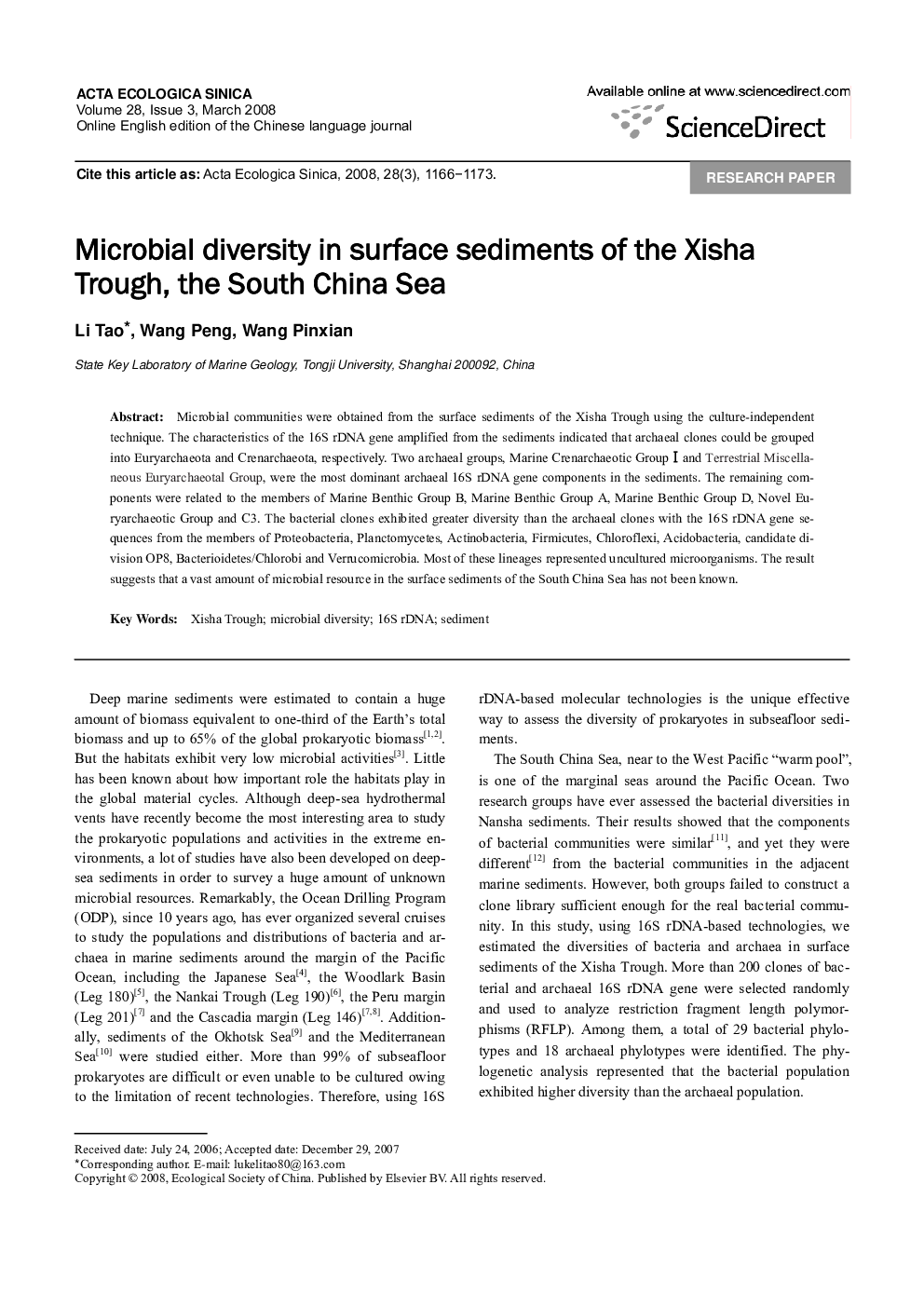| Article ID | Journal | Published Year | Pages | File Type |
|---|---|---|---|---|
| 4380225 | Acta Ecologica Sinica | 2008 | 8 Pages |
Microbial communities were obtained from the surface sediments of the Xisha Trough using the culture-independent technique. The characteristics of the 16S rDNA gene amplified from the sediments indicated that archaeal clones could be grouped into Euryarchaeota and Crenarchaeota, respectively. Two archaeal groups, Marine Crenarchaeotic GroupI and Terrestrial Miscellaneous Euryarchaeotal Group, were the most dominant archaeal 16S rDNA gene components in the sediments. The remaining components were related to the members of Marine Benthic Group B, Marine Benthic Group A, Marine Benthic Group D, Novel Euryarchaeotic Group and C3. The bacterial clones exhibited greater diversity than the archaeal clones with the 16S rDNA gene sequences from the members of Proteobacteria, Planctomycetes, Actinobacteria, Firmicutes, Chloroflexi, Acidobacteria, candidate division OP8, Bacterioidetes/Chlorobi and Verrucomicrobia. Most of these lineages represented uncultured microorganisms. The result suggests that a vast amount of microbial resource in the surface sediments of the South China Sea has not been known.
